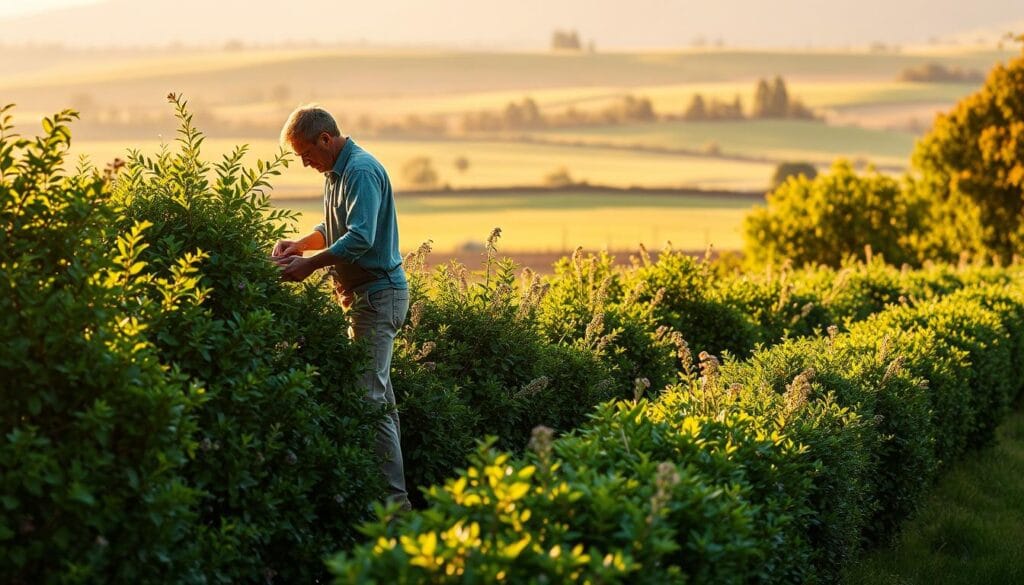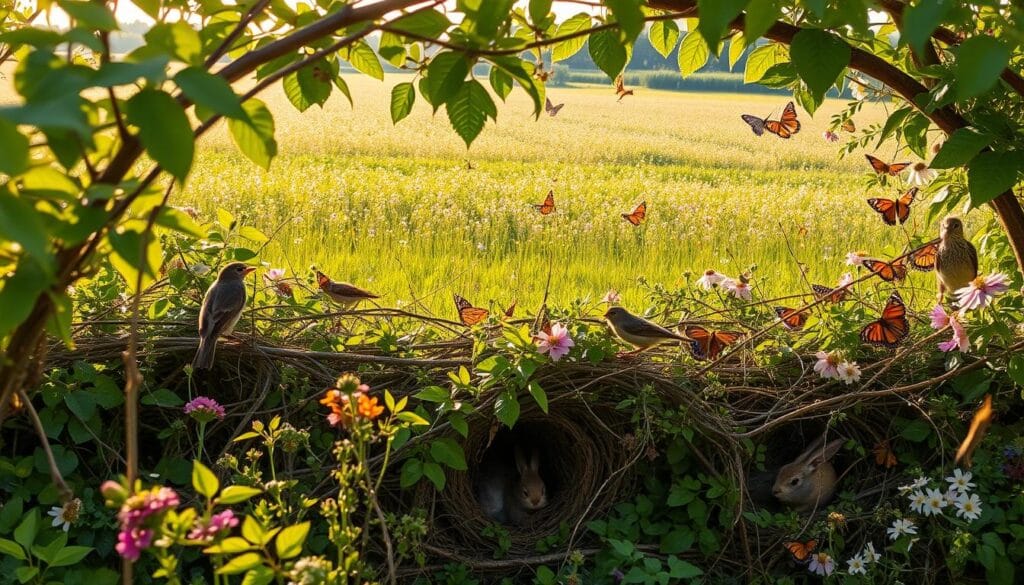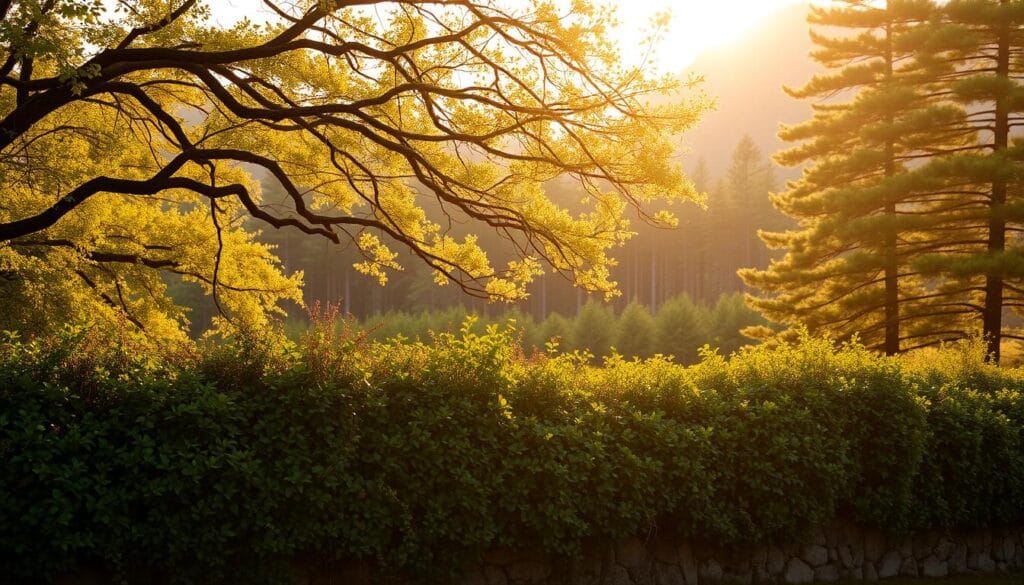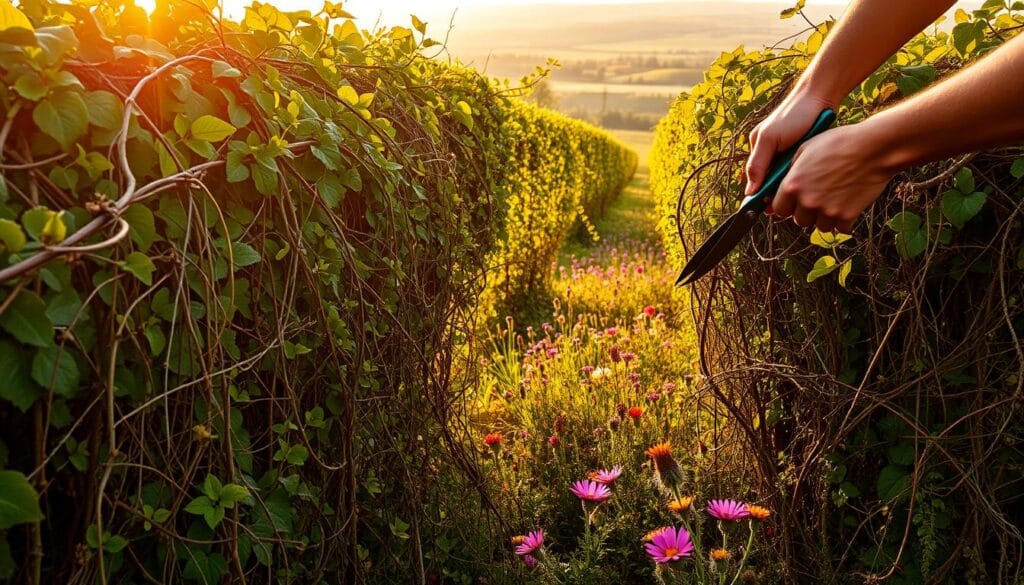Transform your landscape with hedgerows! Learn how these living fences provide privacy, support wildlife, and boost your property value.
Imagine stepping into your backyard and hearing birdsong instead of traffic, watching butterflies dance between vibrant flowers, and feeling a gentle breeze softened by lush greenery. This isn’t just a dream, it’s what happens when you weave nature into your property with living boundaries that protect, beautify, and sustain life.
For centuries, farmers and gardeners have utilized dense rows of trees, shrubs, and grasses to delineate borders, protect crops, and establish habitats. Today, these natural barriers provide modern solutions: privacy without towering fences, wind protection that reduces energy costs, and erosion control that maintains healthy soil. Research from Mississippi State University shows they can even boost biodiversity by acting as wildlife highways.
What if your yard could become a sanctuary for pollinators, a shield against harsh weather, and a year-round display of color? By choosing native species suited to your soil and climate, you’ll spend less time watering and more time enjoying nature’s resilience. Whether you have acres or a small garden, strategic plantings transform empty spaces into thriving ecosystems.
Key Takeaways
- Living boundaries blend beauty with practical benefits like noise reduction and wind protection.
- Native plants require less water and support local birds, bees, and butterflies.
- Dense shrub layers prevent soil erosion better than traditional fencing.
- Well-designed rows create natural corridors for wildlife movement.
- Costs up to 50% less than wooden fences over 10 years.
- Proper planning ensures compliance with local height regulations.
Understanding the Role of Hedgerows in Modern Landscaping
Long before fences marked property lines, ancient farmers shaped the land with living borders. These dense rows of trees and shrubs did more than divide fields—they fed communities, sheltered livestock, and guarded against nature’s forces. Today, their legacy continues as eco-friendly solutions for modern yards.
Historical Evolution and Traditions
Bronze Age farmers in Britain first planted mixed species to protect crops 3,500 years ago. By the Saxon era, these green walls defined boundaries between villages and fields. One striking example? India’s 2,500-mile Great Salt Hedge, grown in the 1800s to block salt smuggling.
In the 1930s, U.S. farmers adopted similar strategies during the Dust Bowl. Government programs funded windbreaking hedgerows to stabilize soil and save failing farms. This practice reduced erosion by up to 70% in critical areas.
Benefits for Privacy, Wind Protection, and Erosion Control
A well-designed hedgerow cuts winter winds by 50%, slashing heating costs. Unlike wooden fences, native shrubs like elderberry or dogwood improve soil health through deep roots that prevent runoff. They also create instant privacy screens as they grow.
Entomologist Doug Tallamy notes:
“Native species support 29% more wildlife than non-native plants.”
This biodiversity boost helps birds, bees, and butterflies thrive while keeping pests in check.
| Time Period | Primary Purpose | Key Features |
|---|---|---|
| Bronze Age | Livestock control | Hawthorn, blackthorn |
| 1930s USA | Wind protection | Osage orange, juniper |
| Modern Day | Eco-privacy | Serviceberry, viburnum |
Planning and Designing Your Hedgerow
Your property’s potential comes alive when you match plants to your land’s unique story. Start by studying sunlight patterns, soil texture, and water flow. A well-planned design reduces maintenance while boosting benefits like pollinator support and wind control.
Assessing Your Landscape and Site Conditions
Test your soil’s pH and drainage first. Sandy soils dry quickly, while clay holds moisture longer. Observe where water pools after rain—these spots need plants that tolerate wet roots.
Track sunlight across your area. Full-sun zones suit flowering shrubs like ninebark, while shaded corners thrive with ferns or spicebush. Cornell University research shows native species survive droughts 35% better than non-native alternatives.
Selecting the Right Layout and Species
Layer plants like nature does. Tall trees (oak, maple) form the canopy. Mid-sized shrubs (serviceberry, hazelnut) fill the middle. Groundcovers like wild strawberry prevent erosion below.
“Layered designs support 4x more bird species than single-height plantings,” notes the Audubon Society.
Space shrubs 4-6 feet apart—crowding invites disease. Leave 15-20 feet between trees for root growth. Mix evergreen and deciduous plants for year-round privacy.
| Plant Type | Wildlife Benefit | Spacing |
|---|---|---|
| Native shrubs | Nesting sites | 4-6 feet |
| Flowering perennials | Pollinator food | 2-3 feet |
| Canopy trees | Bird shelter | 15-20 feet |
Creating a Sustainable Hedgerow: Planting and Maintenance
Your green barrier begins with healthy soil and smart care practices. Proper groundwork ensures plants establish quickly while reducing long-term maintenance. Let’s explore how to build resilience into every layer of your living boundary.

Soil Preparation, Mulching, and Irrigation Techniques
Start by testing your soil’s pH and nutrient levels. Most native shrubs thrive in slightly acidic soil (pH 5.5-6.5). Mix compost into clay soils to improve drainage or add peat moss to sandy areas for better water retention.
Apply 3 inches of organic mulch like wood chips or leaf litter. This reduces weed growth by 80% and keeps roots cool during summer heat. University of California studies show mulched plants need 35% less watering than bare soil.
Install drip irrigation along the base. These systems deliver water directly to roots, cutting evaporation loss. Check moisture weekly—soil should feel like a damp sponge, not soggy or dry.
Pruning, Weeding, and Long-Term Care
Trim shrubs in late winter when plants are dormant. Avoid spring pruning to protect nesting birds and emerging pollinators. Use sharp shears to make clean cuts just above leaf nodes.
Pull weeds manually every 4-6 weeks during growing seasons. Landscape architect Amy Whitworth advises:
“Monthly inspections prevent invasive species from stealing nutrients from your key plants.”
| Season | Task | Frequency |
|---|---|---|
| Spring | Weed removal | Every 3 weeks |
| Summer | Irrigation check | Weekly |
| Fall | Mulch refresh | Annually |
| Winter | Structural pruning | Every 2 years |
Observe plant health during routine walks. Yellowing leaves often signal overwatering, while stunted growth may indicate poor soil quality. Address issues promptly to keep your green corridor thriving for decades.
Hedgerows and Wildlife: Boosting Biodiversity
Every chirp and flutter in your yard signals a thriving ecosystem supported by thoughtful design. Strategic plantings act as natural highways, letting birds and pollinators travel safely between habitats. These green corridors combat habitat fragmentation—a leading cause of declining wildlife populations.

Attracting Birds, Pollinators, and Other Wildlife
Choose plants that provide year-round food and shelter. Serviceberry shrubs feed robins in summer, while winterberry holly sustains cardinals during frosts. Include milkweed for monarch butterflies and coneflowers for bees. A University of Delaware study found properties with native flowers host 3x more pollinator species than those without.
Leave some leaf litter under shrubs—ladybugs and fireflies use it for winter cover. Add a shallow water source like a stone basin with pebbles. Change the water weekly to prevent mosquitoes.
Layering Plants for Optimal Habitat Value
Mimic forest edges where wildlife thrives. Tall trees like red maple form protective canopies. Mid-height shrubs such as elderberry create nesting sites. Ground-level plants like wild ginger shelter frogs and beetles.
“Three-tiered designs support 78% more animal species than single-layer plantings,” reports the National Wildlife Federation.
| Layer | Plant Examples | Wildlife Benefits |
|---|---|---|
| Canopy | Oak, cherry | Bird roosting, shade |
| Understory | Dogwood, hazelnut | Nesting, berries |
| Groundcover | Violets, sedges | Insect habitat |
Space plants to allow movement paths. Leave gaps every 20 feet for small animals. Observe which species visit—woodpeckers mean your snags provide insects, while frequent bees signal successful pollination stations.
Incorporating Trees, Shrubs, and Vines in Your Hedgerow
A living boundary thrives when you combine sturdy trees, flowering shrubs, and climbing vines,, but how do you choose the right mix? Start by matching plant sizes to your space and goals. Tall species form the backbone, while vines add vertical flair without crowding roots.
Windbreaks That Thrive: Grow Greener, Live Better

Choosing the Right Tree and Shrub Varieties
Select native species that mature to your desired height. Virginia pine grows 15-40 feet tall, ideal for windbreaks. Redtwig dogwood stays under 10 feet, offering winter color with crimson stems. Space trees 20 feet apart and shrubs 6-8 feet apart to prevent overcrowding.
Prioritize plants with dual purposes. Native holly varieties like winterberry provide year-round greenery and berries for birds. Avoid invasive species—consult your local extension office for regional recommendations.
Enhancing Aesthetics with Vines and Flowering Plants
Train climbing plants like trumpet honeysuckle or crossvine on trellises between shrubs. These bloom in fiery oranges and reds, attracting hummingbirds. Pair with low-growing perennials like purple coneflower for layered texture.
Rotate flowering species to maintain visual interest. Spring-blooming Carolina jessamine gives way to summer clematis. Leave seed heads standing in fall—they feed goldfinches and add rustic charm.
Designing for Seasonal Interest and Color
Plan for four-season appeal. Serviceberry trees show white blooms in spring, red berries in summer, and fiery foliage in fall. Evergreen shrubs like inkberry holly maintain structure during the winter months.
| Season | Plant Example | Key Feature |
|---|---|---|
| Spring | Redbud tree | Pink blossoms |
| Summer | Buttonbush | Globe-shaped flowers |
| Fall | Black chokeberry | Vibrant red leaves |
| Winter | Witch hazel | Fragrant yellow blooms |
Test combinations in small sections before full planting. Observe how colors and textures interact through different light conditions. Adjust placements to create rhythm and balance in your garden design.
Troubleshooting Common Hedgerow Challenges
Even the healthiest green barriers face occasional setbacks. Spotting issues early helps protect your investment while maintaining habitat quality for birds and pollinators.

Managing Invasive Species and Unwanted Growth
Japanese honeysuckle and garlic mustard often invade planting areas. Pull these intruders by hand after rain when roots release easily. Apply 4 inches of wood chip mulch to block weed seeds from sprouting.
Penn State Extension recommends:
“Remove invasive vines before they flower to prevent seed spread.”
| Problem | Solution | Timing |
|---|---|---|
| Poison ivy | Cut stems, apply vinegar | Early spring |
| Kudzu | Solarization with tarps | Summer heat |
| Tree seedlings | Targeted mowing | Monthly |
Addressing Drainage and Soil Issues
Install French drains if water pools near shrub roots. Mix sand into clay soils to improve flow—1 part sand to 3 parts soil works best. For slopes, plant erosion-control grasses like switchgrass every 4 feet.
Check drip irrigation lines monthly for clogs. A Vermont homeowner reduced water use by 40% using smart timers that adjust for rainfall.
- Test soil moisture with a screwdriver—it should penetrate 6 inches easily
- Refresh mulch annually to maintain a 3-inch depth
- Prune storm-damaged branches within 48 hours
Conclusion
Transforming your outdoor space starts with understanding nature’s blueprint. Living boundaries of trees, shrubs, and flowering plants do more than mark property lines—they rebuild ecosystems. These green corridors reduce erosion, filter water runoff, and shelter pollinators while saving you money over time.
From ancient windbreaks to modern wildlife highways, layered plantings prove that sustainability and beauty coexist. Choosing native species adapted to your soil ensures low maintenance and high impact. Proper spacing and seasonal care keep your green investment thriving for decades.
Your garden can become a sanctuary where birds nest among berry-filled branches and butterflies sip nectar from blooms. Unlike rigid fences, these living walls evolve yearly, offering dynamic privacy and seasonal color. Start small—even 10 feet of mixed plants creates habitat value.
Ready to reimagine your landscape? Experiment with textures and heights that suit your region. Every native shrub planted strengthens local biodiversity while protecting your soil. The earth rewards thoughtful stewardship—your vibrant, life-filled property will show how.

